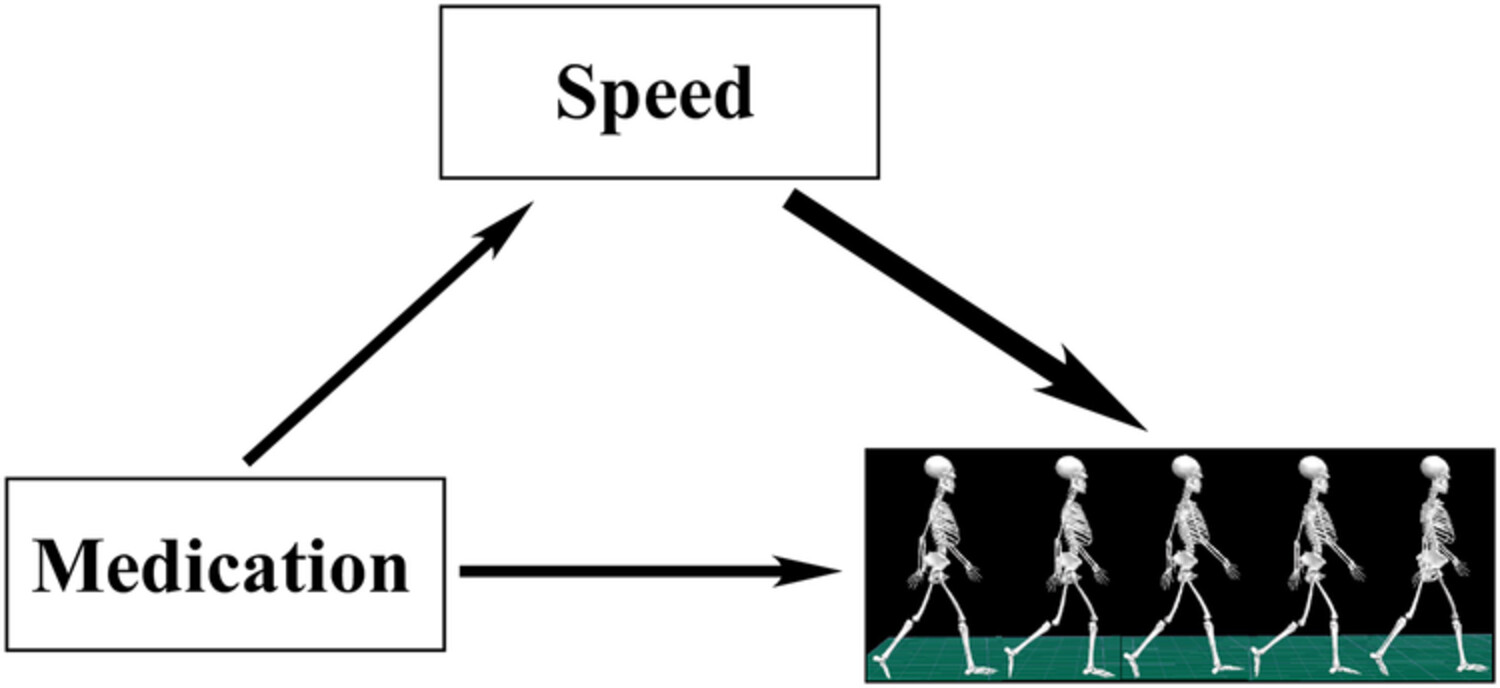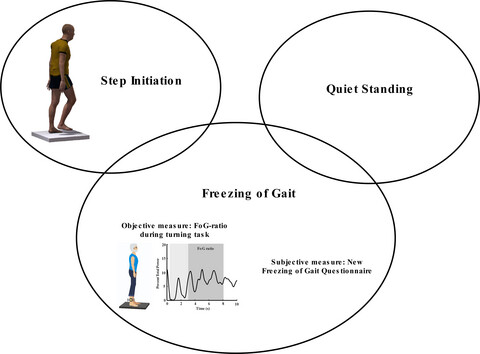Journal list menu
Export Citations
Download PDFs
Table of Contents
Investigation of the Impact of Motor, Nonmotor, Cognitive, and Psychometric Features on Freezing of Gait in Parkinson's Disease
- First Published: 11 March 2025
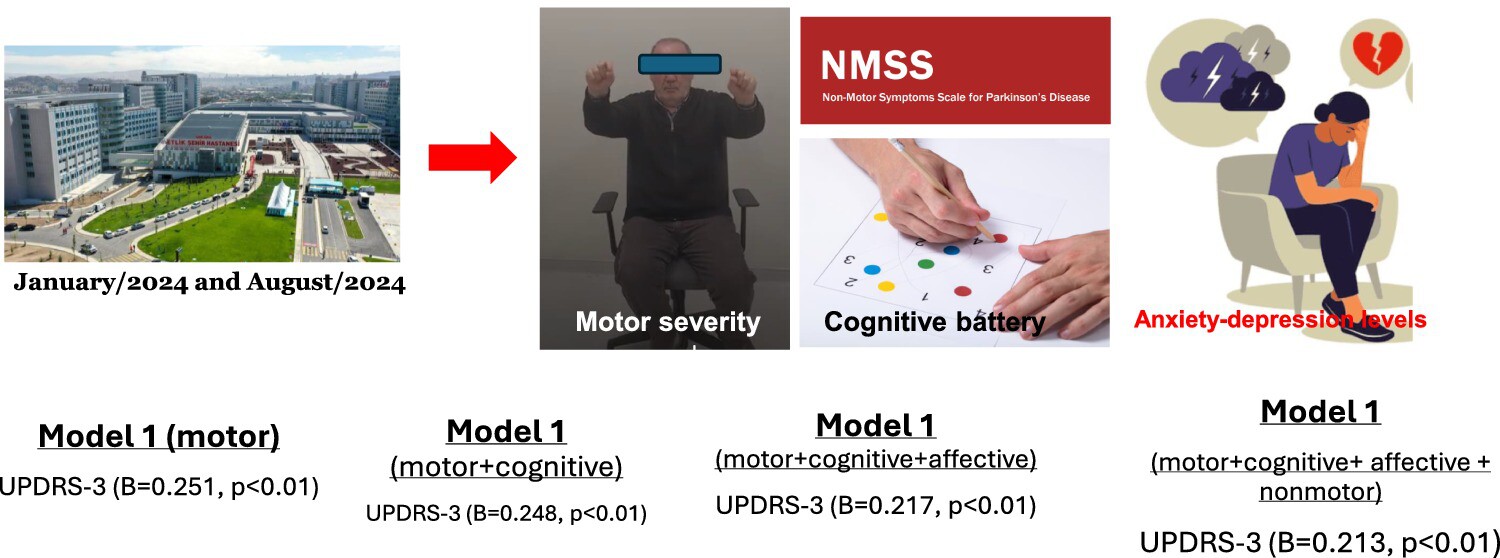
- There are still debates regarding the pathophysiology of freezing of gait (FOG) in Parkinson's disease (PD).
- We sought to investigate the potential contribution of the nonmotor symptoms in the pathophysiology of FOG
- We enrolled all consecutive PD patients who applied to our movement disorders outpatient clinics between January 2024 and August 2024.
- We performed comprehensive assessments including scales to evaluate both motor and nonmotor features, psychometric properties, and cognitive characteristics.
- In the hierarchical regression analyses, we sought to examine the contributory role of the distinct components on FOG separately.
- In conclusion, the MDS-UPDRS-3-off score was the only predictive factor of FOG severity in the model evaluating the motor factors (B = 0.251, p = 0.000) and also the other models which we included the other nonmotor features one by one.
- Our findings showed that nonmotor symptoms, cognitive functions, and psychometric properties do not provide a contributory effect to the motor severity on the FOG severity.
Cortical complexity alterations in motor subtypes of Parkinson's disease: A surface-based morphometry analysis of fractal dimension
- First Published: 03 December 2024

Based on motor symptoms, patients with Parkinson's disease can be classified into multiple subtypes. Our analysis revealed that the postural instability gait difficulty subtype has decreased fractal dimension in various cortical regions compared to both healthy controls and the tremor dominant subtype.
Functional connectivity compensation in Parkinson's disease with freezing of gait
- First Published: 02 October 2024
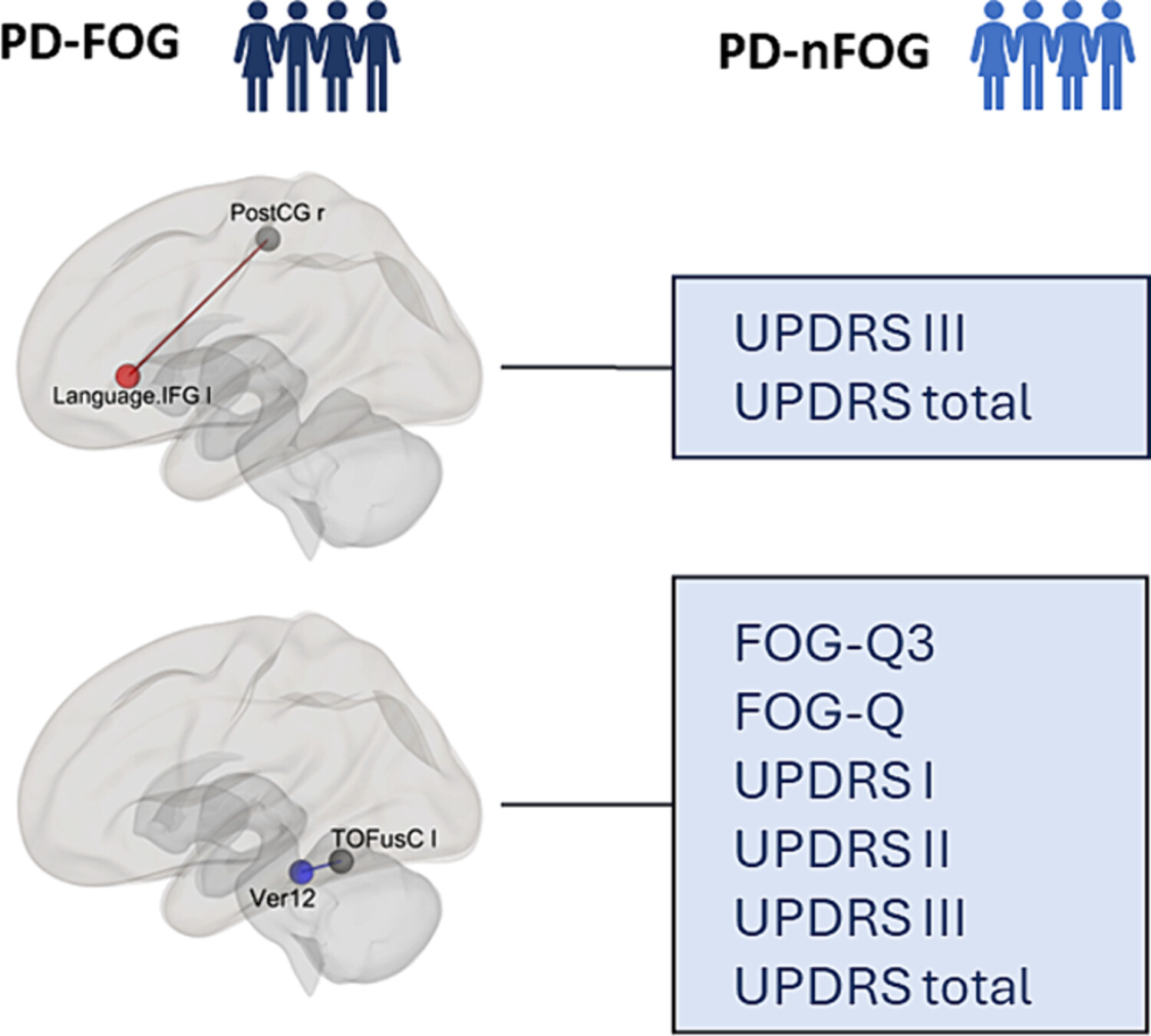
PD-FOG patients exhibited compensatory increases in language network and motor connectivity compared to non-freezers. The decreased connection between vermis 12 (Ver12) and left temporal occipital fusiform cortex (TOFusC-L) may serve as a potential neuroimaging biomarker to distinguish the PD subtype.
Perturbation-based balance training leads to improved reactive postural responses in individuals with Parkinson's disease and freezing of gait
- First Published: 09 May 2023
Levodopa alters resting-state functional connectivity more selectively in Parkinson's disease with freezing of gait
- First Published: 17 October 2022

This study shows that levodopa taken to control Parkinson's disease symptoms induces changes in functional connectivity at rest, in freezers only. Increases (green) in functional connectivity of GPe, GPi, putamen, and thalamus with cognitive, sensorimotor, and limbic cortical regions of the Interference model (blue) were observed. Our results suggest that levodopa can normalize connections similar to non-freezers or increases connectivity to compensate for dysfunctional networks.
Center of pressure responses to unpredictable external perturbations indicate low accuracy in predicting fall risk in people with Parkinson’s disease
- First Published: 09 February 2021
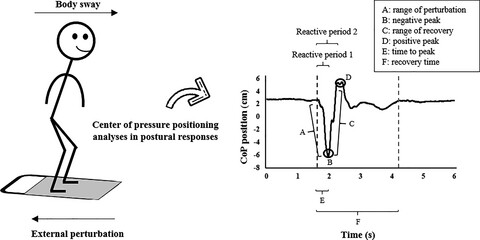
We report that although there is an association between fall risk and range of center of pressure (CoP) in late postural responses, this parameter indicated low accuracy in predicting fall risk in people with Parkinson's disease (PwPD). Also, PwPD fallers have worse postural control than non-fallers during early responses after translations of the support-surface in the posterior direction.
Spectral characteristics of subthalamic nucleus local field potentials in Parkinson's disease: Phenotype and movement matter
- First Published: 04 January 2021
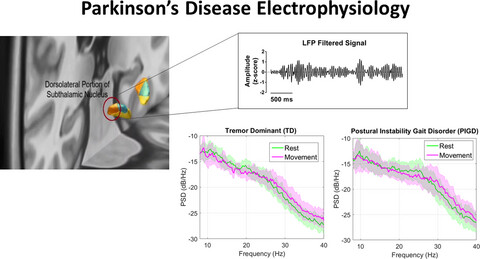
Spectral characterization of local field potentials (LFPs) from the Subthalamic Nucleus (STN) during the intra-operative procedure was performed in rest and movement conditions for tremor dominant (TD) and postural instability and gait disorder (PIGD) Parkinson's disease patients. A higher β2 activity (22–35 Hz) was observed for PIGD patients in rest, while a phenotype-dependent movement-induced desynchronization was observed in lower frequencies (10-20 Hz) for TD, and in higher frequencies (21–28 Hz) for PIGD. Besides, multifactorial statistical analysis, machine learning-based algorithms using bandpower features in the mentioned frequency ranges achieved better phenotype discriminatory performance, suggesting that STN-LFP encodes phenotype-movement dependent information in Parkinson’s disease.
The effects of levodopa in the spatiotemporal gait parameters are mediated by self-selected gait speed in Parkinson's disease
- First Published: 09 November 2021
Disorganized resting-state functional connectivity between the dorsal attention network and intrinsic networks in Parkinson's disease with freezing of gait
- First Published: 03 September 2021
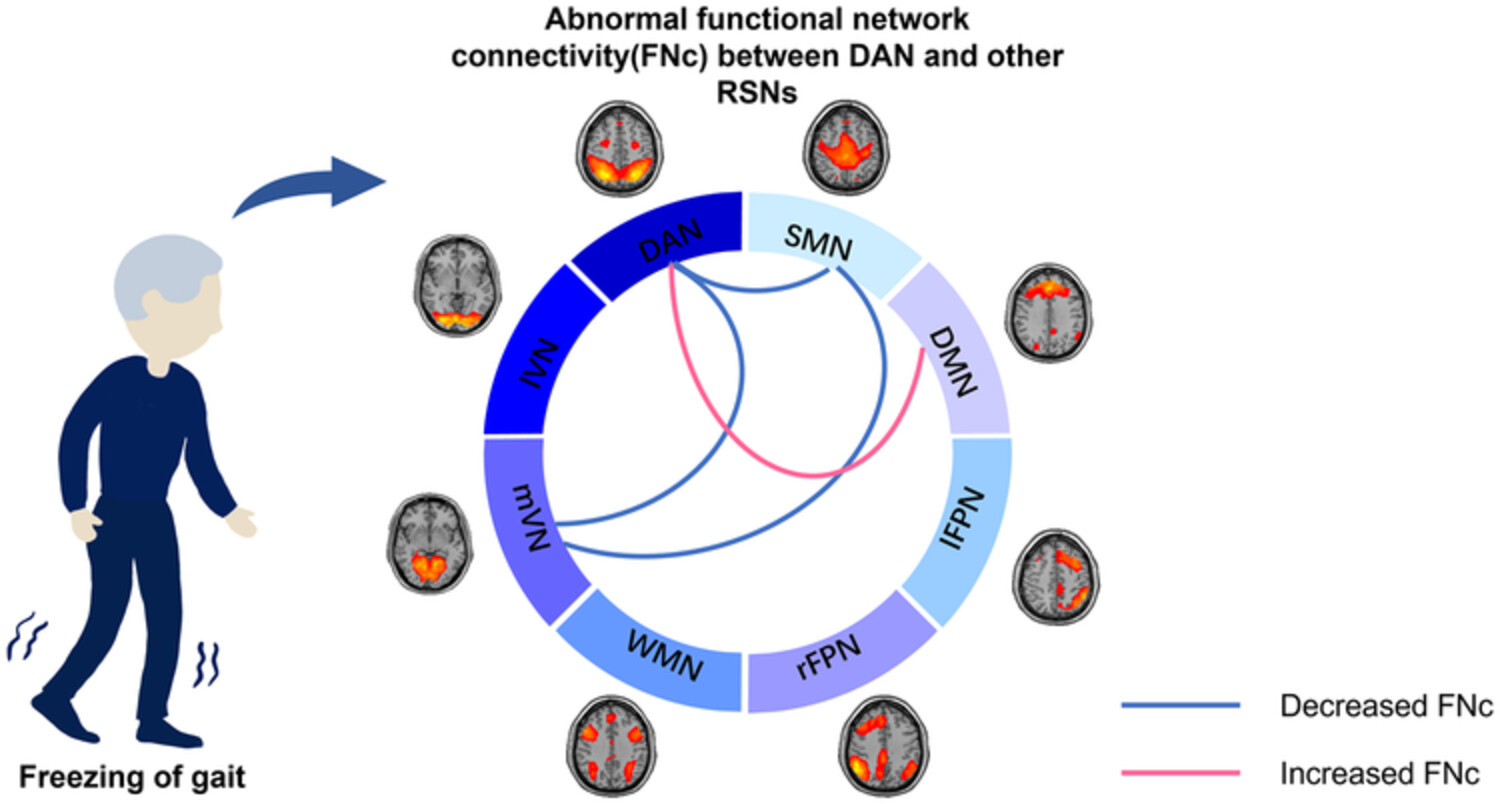
In this study, we investigated functional network connectivity (FNc) changes between the dorsal attention network (DAN) and other resting-state functional networks (RSNs) in PD patients with and without freezing of gait (FOG). We found decreased FNc between DAN and medial visual network (mVN) and sensory-motor network (SMN), and an increased FNc between DAN and default mode network (DMN), suggesting that abnormal FNc between DAN and other RSNs may partly contribute to the mechanism of FOG.
Effects of pedunculopontine nucleus cholinergic lesion on gait and dyskinesia in hemiparkinsonian rats
- First Published: 11 January 2021
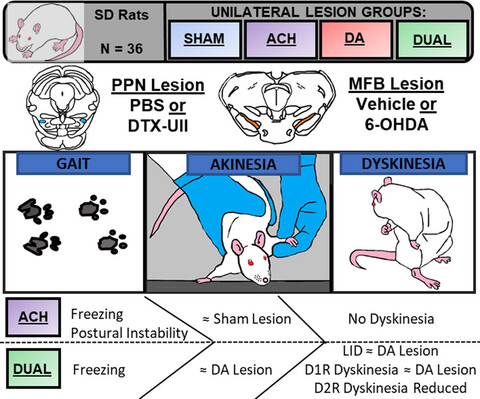
We investigated pedunculopontine nucleus (PPN) lesion effects on gait, akinesia, and dyskinesia in rats. ACh (acetylcholine) lesion produced freezing and postural instability-related gait deficits but did not affect akinesia; dopamine (DA) lesion induced akinesia which improved on L-DOPA. Dual lesion did not affect L-DOPA and D1R dyskinesia but it reduced D2R dyskinesia versus DA lesion. Overall, PPN cholinergic neurons may be promising therapeutic targets for treating Parkinsonian gait deficits.
Is freezing of gait correlated with postural control in patients with moderate-to-severe Parkinson’s disease?
- First Published: 19 October 2020
Impairments in gait kinematics and postural control may not correlate with dopamine transporter depletion in individuals with mild to moderate Parkinson's disease
- First Published: 27 December 2018
Reducing falls in Parkinson's disease: interactions between donepezil and the 5-HT6 receptor antagonist idalopirdine on falls in a rat model of impaired cognitive control of complex movements
- First Published: 29 July 2016
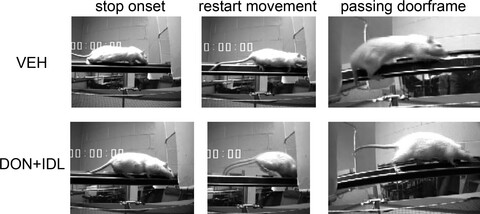
Following short freezes, rats with dual cortical cholinergic and striatal dopaminergic deafferentation resumed forward movement relatively slowly, generally with the tail positioned relatively low and with a slouched posture, yielding slips and falls. When treated with donepezil and idalopirdine (DON + IDL), such rats resumed forward movement, sometimes starting with a hop, they quickly regaining regular traversal speed and fluid forward movement, with high and firm tail position and upright posture, thereby preventing slips and falls.
Upper limb movement interruptions are correlated to freezing of gait in Parkinson’s disease
- First Published: 30 March 2009
Bilateral coordination of walking and freezing of gait in Parkinson’s disease
- First Published: 11 April 2008






